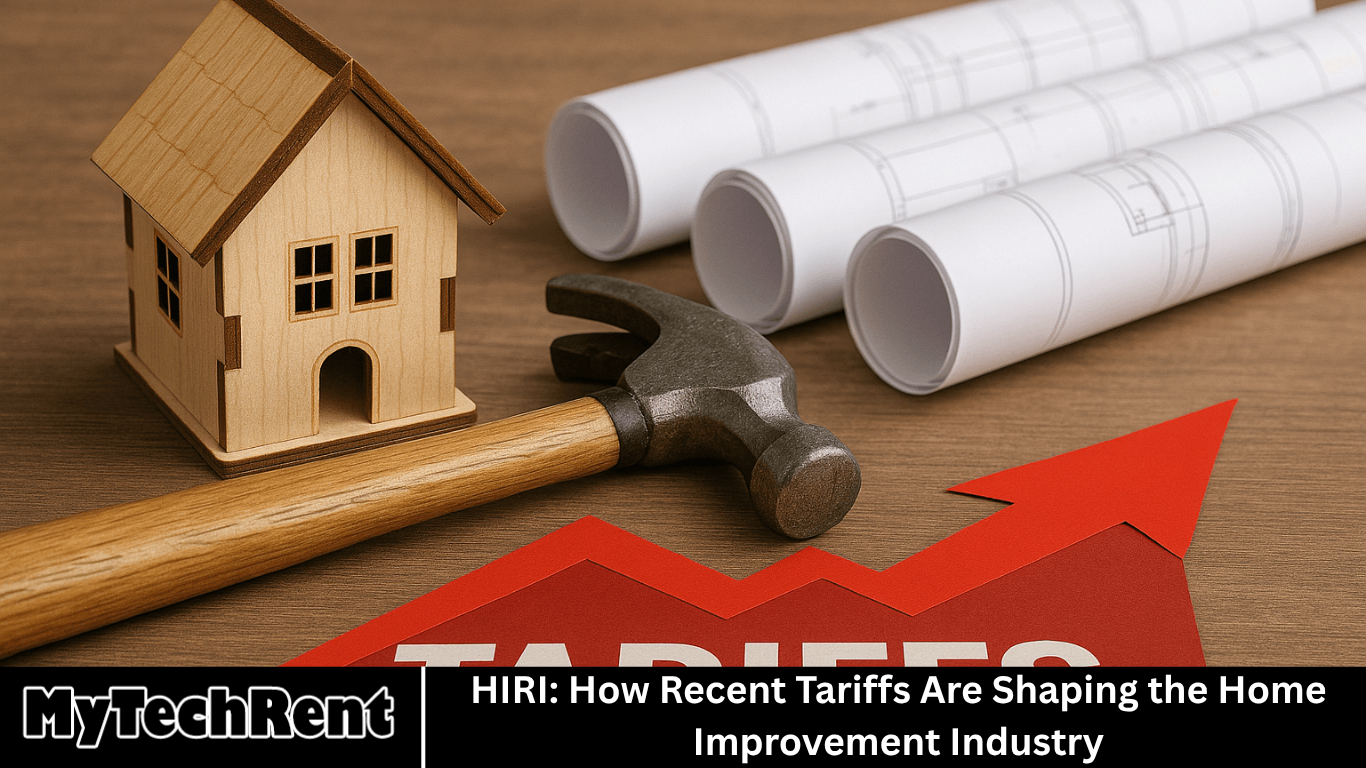The home improvement industry is a vibrant and ever-evolving sector, fueled by homeowners’ desires to enhance comfort, functionality, and aesthetic appeal. However, in recent years, a major factor has begun to reshape this industry in significant ways: tariffs on imported materials.
- Understanding Tariffs and Their Impact
- Rising Material Costs and Consumer Impact
- Supply Chain Adjustments
- Differential Impact Across Home Improvement Projects
- Stakeholders in the Home Improvement Ecosystem
- Strategies for Managing Tariff Impact
- Future Trends in the Home Improvement Industry
- Frequently Asked Question
- How do tariffs affect the cost of a remodeling project?
- Are all home improvement projects equally affected by tariffs?
- Should I delay my renovation due to tariffs?
- Can contractors help mitigate tariff impacts?
- Do tariffs benefit domestic suppliers?
- How can retailers manage tariff challenges?
- Are there alternative materials to avoid high-tariff products?
- Conclusion
Whether you are a homeowner planning a remodel, a contractor sourcing materials, or a retailer managing supply chains, tariffs can influence costs, timelines, and project decisions. The Home Improvement Research Institute (HIRI) has been monitoring these developments closely.
Highlighting how trade policies are influencing everything from material pricing to consumer behavior. In this article, we will explore the effects of recent tariffs on the home improvement industry, discuss how different stakeholders are adapting, and provide insights into future trends.
More Read: 10 Spooktacular Halloween Decoration Ideas That Balance Style and Fright
Understanding Tariffs and Their Impact
What Are Tariffs?
Tariffs are taxes imposed on goods imported from other countries. When applied, they increase the cost of imported products, affecting manufacturers, suppliers, and ultimately consumers.
In the context of home improvement, tariffs can impact a wide range of products, including lumber, steel, aluminum, glass, appliances, and specialty building materials.
Why Tariffs Matter for Home Improvement
The home improvement industry heavily relies on both domestic and imported materials. When tariffs increase the cost of imported goods, the consequences ripple across the industry:
- Higher Material Costs: Tariffs make imported materials more expensive, directly affecting the total cost of a remodeling or construction project.
- Supply Chain Adjustments: Contractors and suppliers may seek alternative sources or domestic options to mitigate price increases.
- Project Planning Changes: Homeowners may scale back projects, delay renovations, or adjust design choices based on the cost of materials.
By understanding the role of tariffs, stakeholders can make informed decisions that balance quality, cost, and timing.
Rising Material Costs and Consumer Impact
One of the most immediate effects of tariffs is the increase in material costs. For homeowners, this can mean paying hundreds or thousands more for the same renovation project. For example, imported cabinetry, steel frames, and appliances are often subject to tariffs, making them significantly more expensive.
Contractors are often the first to feel the pressure, as they must manage these rising costs while maintaining profitability. Some contractors pass the increased costs to homeowners, while others absorb the difference, potentially affecting their margins.
Consumers, on the other hand, may respond by postponing projects, choosing cheaper alternatives, or modifying project scopes. In some cases, the uncertainty around tariffs causes homeowners to delay decisions until they have more clarity on material pricing.
Supply Chain Adjustments
Tariffs have forced both contractors and retailers to reevaluate their supply chains. Key strategies include:
- Diversifying Suppliers: Sourcing materials from multiple countries or domestic manufacturers can reduce dependency on a single market.
- Exploring Domestic Options: Domestic materials may become more attractive as tariffs make imports costlier, providing opportunities for local producers.
- Bulk Purchasing: Contractors may purchase larger quantities of materials in advance to lock in prices before tariffs increase.
- Alternative Materials: Designers and builders may substitute high-tariff materials with alternatives that are more cost-effective and tariff-free.
These supply chain strategies aim to balance cost, quality, and availability, ensuring that projects remain feasible despite tariff pressures.
Differential Impact Across Home Improvement Projects
Not all renovation projects are equally affected by tariffs. Understanding which types of projects are most sensitive can help homeowners plan more effectively.
Highly Sensitive Projects
- Kitchen Renovations: Appliances, cabinetry, and countertops often include imported materials subject to tariffs.
- Bathroom Remodels: Specialty tiles, fixtures, and vanities can be heavily affected.
- Structural Additions: Steel, aluminum, and certain lumber products may experience price hikes.
Less Sensitive Projects
- Landscaping: Local soil, plants, and hardscaping materials are typically tariff-free.
- Interior Painting: Domestic paint products and supplies are largely unaffected.
- Basic Repairs: Projects using readily available domestic materials tend to see minimal cost changes.
By assessing the tariff sensitivity of different project types, homeowners and contractors can prioritize renovations that offer the best value for investment.
Stakeholders in the Home Improvement Ecosystem
Homeowners
Homeowners face direct consequences from tariffs in the form of higher project costs. Those planning renovations may need to adjust budgets, explore alternative materials, or delay projects. Being aware of potential cost increases allows homeowners to plan strategically and avoid unexpected financial strain.
Contractors
Contractors must navigate the challenges of rising material costs, fluctuating supply availability, and client expectations. Effective communication with clients about potential cost changes and sourcing strategies is essential for maintaining trust and project timelines.
Retailers and Manufacturers
Retailers who import materials may experience increased costs, which can affect pricing and competitiveness. Manufacturers may shift sourcing strategies, invest in domestic production, or explore alternative materials to maintain profitability and market share.
Domestic Material Producers
Tariffs can benefit domestic suppliers by making imported alternatives more expensive. However, domestic producers must ensure they have the capacity and quality to meet increased demand. Otherwise, they risk losing potential market opportunities.
Strategies for Managing Tariff Impact
For Homeowners
- Lock in quotes early and clarify expiration dates.
- Prioritize projects that rely on domestic materials.
- Include a contingency budget to account for potential cost increases.
- Consider smaller upgrades or phased renovations to manage costs.
For Contractors
- Diversify suppliers to reduce dependency on high-tariff imports.
- Explore alternative materials or domestic options.
- Communicate clearly with clients about cost risks and potential delays.
- Secure pricing agreements where possible to protect against sudden increases.
For Retailers and Manufacturers
- Adjust sourcing strategies to minimize tariff exposure.
- Invest in domestic production capacity where feasible.
- Communicate lead times and potential price changes to customers.
- Innovate in materials and supply chain efficiency to reduce costs.
Future Trends in the Home Improvement Industry
The influence of tariffs is likely to persist, shaping the home improvement industry in several ways:
- Continued Cost Pressure: Material costs will remain a key consideration for homeowners and contractors.
- Shift to Domestic Production: Increased domestic manufacturing may become a strategic priority.
- Innovation in Materials: Alternative materials and design solutions may gain popularity to reduce dependency on imports.
- Consumer Behavior Changes: Homeowners may prefer smaller, more cost-effective projects over large-scale renovations.
- Policy Influence: Trade policies will continue to play a significant role in determining material costs and availability.
By anticipating these trends, stakeholders can make proactive decisions to minimize risk and maximize efficiency.
Frequently Asked Question
How do tariffs affect the cost of a remodeling project?
Tariffs increase the cost of imported materials, which can add hundreds or thousands of dollars to a project depending on the materials involved.
Are all home improvement projects equally affected by tariffs?
No. Projects that use imported materials such as appliances, cabinetry, and specialty tiles are more affected than projects using domestic materials like paint or landscaping supplies.
Should I delay my renovation due to tariffs?
Not necessarily. Delaying may expose you to inflation or labor cost increases. Consider the overall cost and urgency of your project before deciding.
Can contractors help mitigate tariff impacts?
Yes. Contractors can diversify suppliers, suggest alternative materials, and communicate cost risks to help manage budget expectations.
Do tariffs benefit domestic suppliers?
They can, by making imported materials more expensive. However, domestic producers must have capacity and competitive pricing to capitalize on this opportunity.
How can retailers manage tariff challenges?
Retailers can adjust sourcing, invest in domestic production, manage inventory strategically, and communicate potential price changes to customers.
Are there alternative materials to avoid high-tariff products?
Yes. Contractors and designers can explore local or alternative materials, recycled products, or innovative solutions to maintain quality while reducing costs.
Conclusion
Tariffs have become a defining factor in the home improvement industry, influencing costs, project planning, and supply chain strategies. Homeowners, contractors, retailers, and domestic suppliers must adapt to this evolving landscape by exploring alternative materials.
By understanding the impact of tariffs, stakeholders can make informed decisions, minimize financial risk, and ensure that home improvement projects remain successful despite the challenges of global trade policies.








